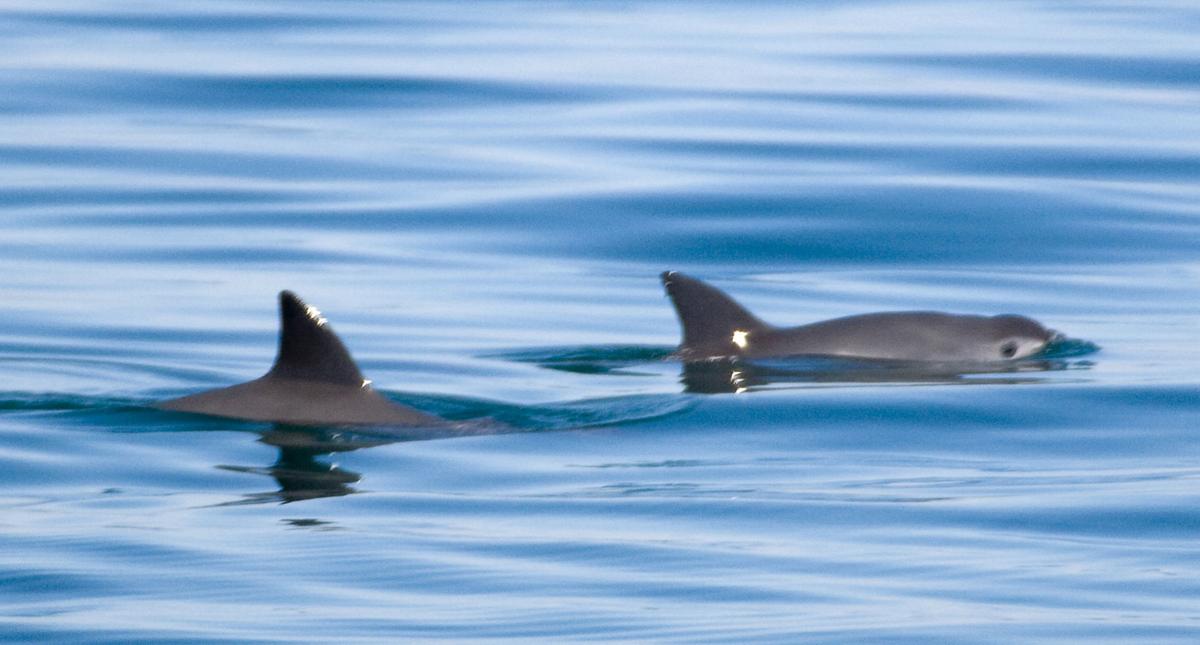Having a lecture series on Tumamoc Hill about an endangered porpoise is not as weird as it sounds.
The vaquita marina, after all, lives in the upper Gulf of California — the Sonoran Desert's ocean.
The small porpoise is on the brink of extinction, so often ensnared by fishing nets that population estimates are as low as a few dozen.
The University of Arizona College of Science lecture series starting Wednesday evening in Tumamoc Hill's Desert Laboratory will explore the factors have led to this small mammal's near extinction and how conservationists can learn from the situation.
"The situation of the vaquita and all of the forces at play, this is the future of conservation, and there are so many lessons to be learned here..." says Ben Wilder, the director of the desert laboratory. "If we aren't talking about it and learning, we're doomed to repeat what is happening now."
The vaquita's situation is challenging, to say the least. It's a naturally rare species endemic to the Gulf of California — a region where people depend on fishing for their livelihood. That's tricky enough. Now add poachers with cartel connections going after a native fish — the totoaba — to sell its valuable swim bladder on the Chinese black market. The vaquita are literally caught in the middle, killed in the poachers' nets.
"It's an impossible situation," Wilder says. "And it's really dark and it's really sad, but there's a lot to be learned across all pieces of it, and it's making us as scientists ask some really important questions about how we factor in social livelihoods and the means of fishermen. And is single species conservation the most important approach to take?"
Those are some of the questions that will be explored in the monthly Tumamoc Lecture Series, now through May. The series is a collaboration with the Intercultural Center for the Study of Deserts and Oceans and will feature wildlife and conservation experts from both the United States and Mexico.
You can catch the series in the Desert Laboratory, halfway up Tumamoc. You can walk (it's steep) or there will be a shuttle service.
Tonight's talk is full, but you can check for cancellations or reserve a seat for future talks with Cynthia Anson at 629-9455 or by emailing desertlaboratory@gmail.com.
"The vaquita is of the desert. It's of the Gulf of California, and it only occurs in that small zone of the upper Gulf that is connected to the Colorado River..." Wilder says. "And that's what makes this so tragic. This is our porpoise. This is our desert porpoise, and once you lose that, it's gone forever."
Here's a schedule of the talks:
Jan. 16: "Vanishing Vaquitas: Lessons from a Humble Porpoise"
Feb. 20: "Stories from the Field"
March 20: "Managing Two Species on the Brink of Extinction"
April 17: "Local Livelihoods"
May 15: "Lessons to be Learned and Market-Driven Solutions"
If you go
What: Tumamoc Lecture Series: "La Vaquita Marina, the World's Most Endangered Marine Mammal: Where Do We Go from Here?"
When: 6 p.m. Wednesdays, Jan. 16, Feb. 20, March 20, April 17 and May 15.
Where: Desert Laboratory on Tumamoc Hill. You can park along Anklam Road.
Cost: Free.
More info: Visit tumamoc.arizona.edu/tumamoc-lecture-series
The University of Arizona's College of Science Tumamoc Lecture Series will explore the past, present and future for the vaquita, a small, enda…





